Tag: ALI
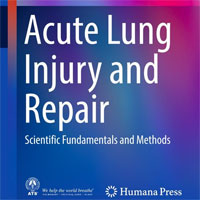
Acute Lung Injury and Repair: Scientific Fundamentals and Methods
Acute Respiratory Distress Syndrome (ARDS) remains an important cause of morbidity and mortality worldwide, and the incidence is predicted to increase with the aging population. Several clinical disorders can initiate... read more
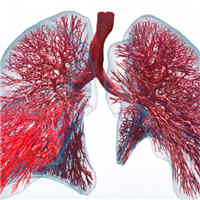
ARDS Subphenotypes Validation and Utility Identified by Machine-learning Models
Classifier models using clinical variables alone can accurately assign ARDS subphenotypes in observational cohorts. Application of these models can provide valuable prognostic information and could inform management strategies... read more

miR-221-5p-Mediated Downregulation of JNK2 Aggravates ALI
Sepsis and acute lung injury (ALI) are linked to mitochondrial dysfunction; however, the underlying mechanism remains elusive. We previously reported that c-Jun N-terminal protein kinase 2 (JNK2) promotes stress-induced mitophagy... read more
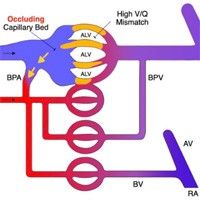
COVID-19 Acute Lung Injury
There is a lot we still do not know when it comes to COVID-19 pathophysiology. We are learning every day, and as we navigate the waters of the unknown, there are a few that boldly dare to try and understand what is happening... read more

Prevention and Treatment of ALI with Time-controlled Adaptive Ventilation
Neither the current lung protect and rest nor open lung approach (OLA) ventilation strategies have been effective at reducing VILI and ARDS-related mortality below that in the ARMA study. For a protective ventilation strategy... read more

Pathological Inflammation in Patients with COVID-19
The COVID-19 pandemic caused by infection with SARS-CoV-2 has led to more than 200,000 deaths worldwide. Several studies have now established that the hyperinflammatory response induced by SARS-CoV-2 is a major cause of disease... read more

Failure of Non-invasive Ventilation in Patients with Acute Lung Injury
A high failure rate of the initial non-invasive positive pressure ventilation (NIPPV) therapy has been observed in medical critically ill patients with acute lung injury (ALI). Unless the underlying shock, metabolic acidosis... read more
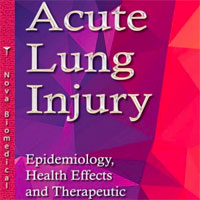
Acute Lung Injury: Epidemiology, Health Effects and Therapeutic Treatment Strategies
ALI/acute respiratory distress syndrome (ARDS) is characterized by diffuse alveolar damage, alveolar capillary leakage, lung edema, neutrophil-derived inflammation, and surfactant dysfunction. These changes lead to clinical... read more
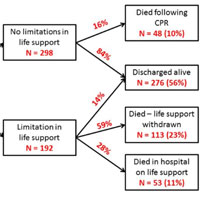
Age and Decisions to Limit Life Support for Patients with ALI
The purpose of this study was to estimate the association between patient age and the rate of new limitations in the use of life support, independent of daily organ dysfunction status, following acute lung injury (ALI) onset. 490... read more

Mechanical Ventilation Enhances Extrapulmonary Sepsis-induced Lung Injury
These data show for the first time that otherwise noninjurious mechanical ventilation can exacerbate acute lung injury (ALI) due to extrapulmonary sepsis underscoring a potential interactive contribution of common events... read more

Initial Trophic vs Full Enteral Feeding in Patients With Acute Lung Injury
In patients with acute lung injury, compared with full enteral feeding, a strategy of initial trophic enteral feeding for up to 6 days did not improve ventilator-free days, 60-day mortality, or infectious complications but... read more
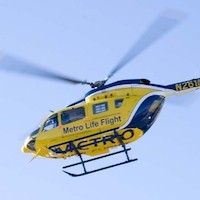
Giving plasma in helicopters, before hospital, may save trauma patients
Giving plasma to trauma victims during air transport, rather than waiting until arrival at the hospital, saved lives, according to the results of a study that involved patients treated aboard MetroHealth Medical Center's... read more
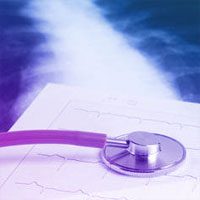
Airway Pressure-time Curve Profile Detects Tidal Recruitment/Hyperinflation
Airway pressure-time curve profile (stress index) detects tidal recruitment/hyperinflation in experimental acute lung injury. Shape of the Paw-t curve detects tidal recruitment and tidal hyperinflation. Pulmonary computed... read more
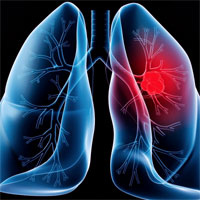
Criteria for Identifying Lung Injury Prior to the Need for Positive Pressure Ventilation
Mortality associated with acute lung injury (ALI) remains high. Early identification of ALI prior to onset of respiratory failure may provide a therapeutic window to target in future clinical trials. This study empirically... read more




